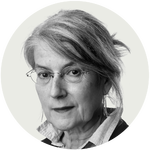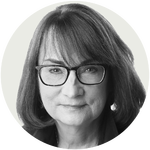A00316 - After 50 Years Why Haven't We Made More Progress?: Amherst College Diversity
 For the past 29 years, JBHE has collected Black student admissions data from the highest-ranked liberal arts colleges. Over this long period, there have been 14 years when Amherst College in Massachusetts reported the highest percentage of Black first-year students. On six occasions, Wesleyan University in Middletown, Connecticut, had enrolled the highest percentage of Black first-year students.
For the past 29 years, JBHE has collected Black student admissions data from the highest-ranked liberal arts colleges. Over this long period, there have been 14 years when Amherst College in Massachusetts reported the highest percentage of Black first-year students. On six occasions, Wesleyan University in Middletown, Connecticut, had enrolled the highest percentage of Black first-year students.
Six years ago, there were 87 Black first-year students at Amherst. They made up a whopping 18.2 percent of the first-year class. At that time, this was the largest percentage of Black first-year students at any of the high-ranking liberal arts colleges in the history of the JBHE survey. Two years ago, Amherst College sat on top of the survey and the college set a new standard. There were 81 Black students in the 2020 entering class. They make up 18.7 percent of the first-year class. This was the largest percentage of Black students in an entering class in the history of our surveys of both high-ranking liberal arts colleges and the nation’s leading research universities.
Last year, Amherst College set another new standard. There were 100 Black students in the class entering in the fall of 2021. They make up 19.5 percent of the Class of 2025. Now, for the first time in the 30-year history of the JBHE surveys, a college has enrolled a first-year class that is more than one-fifth Black. There are 96 Black students in this year’s entering class. They make up 20.6 percent of the total.
Black First-Year Enrollments at High-Ranking Liberal Arts Colleges,
Class of 2026
Source: JBHE Research DepartmentNotes: Colleges are ranked by the highest percentage of Black first-year students.
Some information obtained from public sources.
*Institutions supplying numbers in accordance with Dept.of Education guidelines - no foreign or biracial students. (See text.)
Swarthmore College in Pennsylvania has 77 Black students in this year’s entering class. They make up 17.7 percent of the first-year students. This is the seventh year in a row that Swarthmore has ranked in the top 5 in our survey. A year ago there were 68 Black first-year students at the college, making up 14.9 percent of the entering class.
Six years ago, for the first time in the history of our survey, Pomona College in Claremont, California, had the highest percentage of Black students in the entering classes at the nation’s leading liberal arts colleges. There were 65 Black first-year students at Pomona College that year. They made up 15.8 percent of the entering class. Five years ago, Pomona dropped to fourth place with an entering class that was 12.6 percent Black. Four years ago, once again Pomona sat atop our rankings. Pomona had 67 Black first-year students, up from 52 the previous year. Blacks were 16.3 percent of the first-year class. Last year Pomona College ranked in fifth place with an entering class that was 13.5 percent Black. This year Pomona moves up to the third position with an entering class that is 13.5 percent Black.
While the achievements of Amherst College, Swarthmore College, and Pomona College in attracting Black students can not be overstated, an equally compelling tale has taken place at Harvey Mudd College in Claremont, California, which bills itself as the nation’s top liberal arts college of engineering, science, and mathematics.
Thus, it may be a surprise to many readers, that Harvey Mudd College ranks fourth in our survey this year with an entering class that is 13 percent Black. A year ago, Blacks make up 17.7 percent of the entering class. Two years ago, Blacks made up 8.6 percent of the students in the entering class. In 2009, Harvey Mudd College ranked last in our survey in the Black percentage of first-year students. That year there were only three black students in the entering class. They made up just 1.4 percent of all entering students.
In 2019, Harvey Mudd College accepted only 13.7 percent of all applicants. But the acceptance rate for Black applicants was 35 percent. Blacks made up 10.7 percent of the entering class in 2019. For the past three years, the college has declined to provide JBHE with data on the acceptance rate of Black students.
Three other liberal arts colleges that responded to our survey had entering classes that were more than 10 percent Black. They are Haverford College in Pennsylvania, Bowdoin College in Maine, and Wesleyan University in Connecticut.
Mount Holyoke College had Black enrollments of just under 10 percent. A year ago, only 3.8 percent of the entering students were Black. The number of Black students in the first-year class increased from 18 last year to 54 this year.
At 2 Elite Colleges, Shifts in Racial Makeup After Affirmative Action Ban
Amherst College and Tufts University saw drops in the number of Black students after a Supreme Court decision ending affirmative action. At other schools, the picture is murkier.

A drop in the share of Black first-year students at two elite colleges this school year has provided an early sign that the Supreme Court’s decision to end affirmative action could have an impact on racial diversity, at least at some of the nation’s more selective schools.
At Amherst College, a small liberal arts college in Massachusetts, the share of Black students decreased sharply — by eight percentage points — for this year’s entering class, according to data released on Thursday. It decreased more moderately at Tufts University, a larger private college near Boston, according to that school’s data. At the University of Virginia, which released its data on Friday, the percentage of Black students also dipped, but only slightly.
The new evidence comes after the Massachusetts Institute of Technology announced a sharp drop in Black enrollment, by 10 percentage points, last week.
Amherst’s data showed that the percentage of white students enrolling rose sharply, while the percentage of Asian American students rose slightly.


Comments
Post a Comment